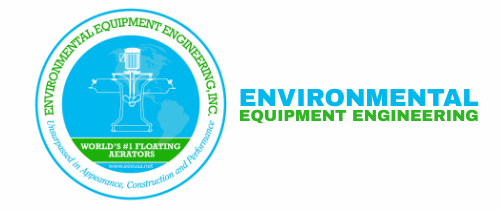
Winemaking produces a large amount of wastewater with a high Chemical Oxygen Demand (COD) and Biological Oxygen Demand (BOD) mostly due to dissolved sugars in the wastewater. As a result, winery wastewater requires a treatment process that reduces both COD and BOD to acceptable levels (generally below 200PPM) before the wastewater can either be reused e.g. for irrigation purposes or safely disposed of without attracting the attention of the local water authorities.
COD: Refers to the total amount of Oxygen required to oxidise (combine chemically with oxygen) all organic carbon to Carbon Dioxide or Water.
BOD: BOD when present in wastewater is the direct result of waste (either human or food) or other organic materials. BOD refers to the amount of oxygen required to break down this organic material by organisms.
How Floating Aerators Can Assist Wineries
Floating aerators placed in a lagoon or treatment pond provide aeration to enhance the biological oxidation of winery wastewater and can deliver up to 90% removal of biological oxygen demand, generally within weeks, depending on the scale of operation.
Aeration is the process of air being dissolved, circulated or mixed in a liquid substance. When it comes to specific areas such as wastewater treatment, aeration is an important part of the process to recover reusable water and reduce organic components in the water. For instance, aeration increases the levels of dissolved oxygen which in turn allows a better balance of biological processes.
Floating aerators provide two valuable functions as a part of this process, firstly they transfer air into the lagoon or pond required for biological oxidation reaction and also provide the mixing component required for dispersing the air and contacting the wastewater, oxygen, and microbes reactants, speeding up the rate of organic composition and reducing Phosphorus levels that would normally facilitate the growth of organic matter
Advantages to using EEE Floating Aerators for Wineries
EEE Floating Aerators are the most effective and energy efficient aerators available and are designed to withstand the most demanding environments, requiring less maintenance compared to competing aerators and reducing operational costs for treating wastewater.
The most notable difference is the efficiency of our products.
The intake outlet and outtake outlet are larger in diameter than competitor models and the interior surfaces of the aerator are smooth and crafted to form a graceful natural radius.
The design is such that water approaches the inlet from all directions and faces no angle or rough edges as it passes through the aerator. As a result losses due to wear and tear are reduced to a large extent.
The aerator comprises a large diffuser that provides more surface for the water to follow. Water rushes out in a high-velocity intruding spray pattern while at the same time creating a wave action that enhances the diameter of mixing, oxygen dispersion, and transfer of oxygen.
Our aerator pumps more water than other models and thus increases the rate of oxygen transfer by approximately 30-40%.
Summary
Environmental Equipment Engineering have been producing Energy efficient Floating Aerators for more than 45 years.
Our products have notable advantages over our competition including up to 40% higher oxygen transfer rate and a ten year warranty on all non-moving parts.
Contact us today for a free consultation.
